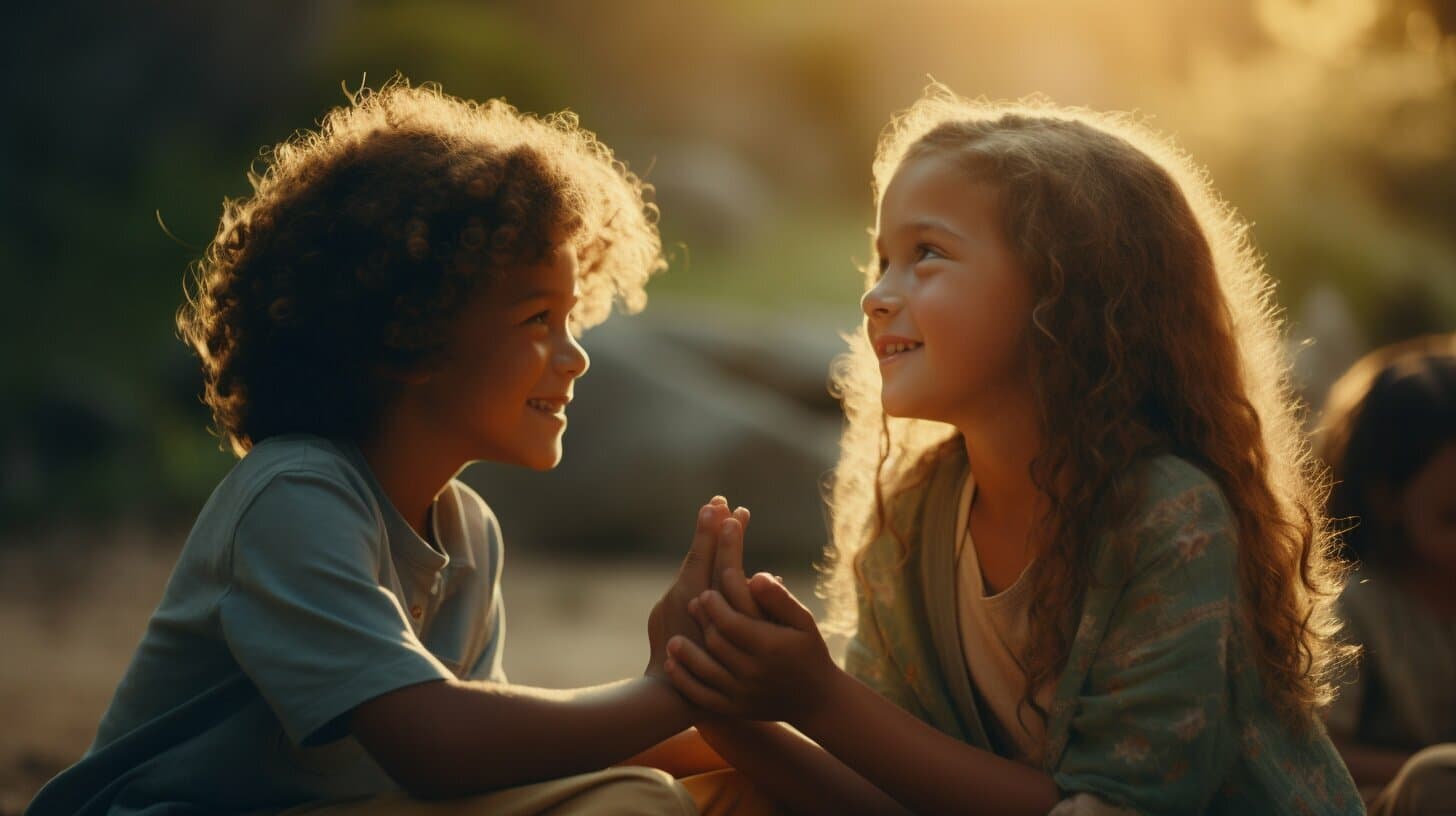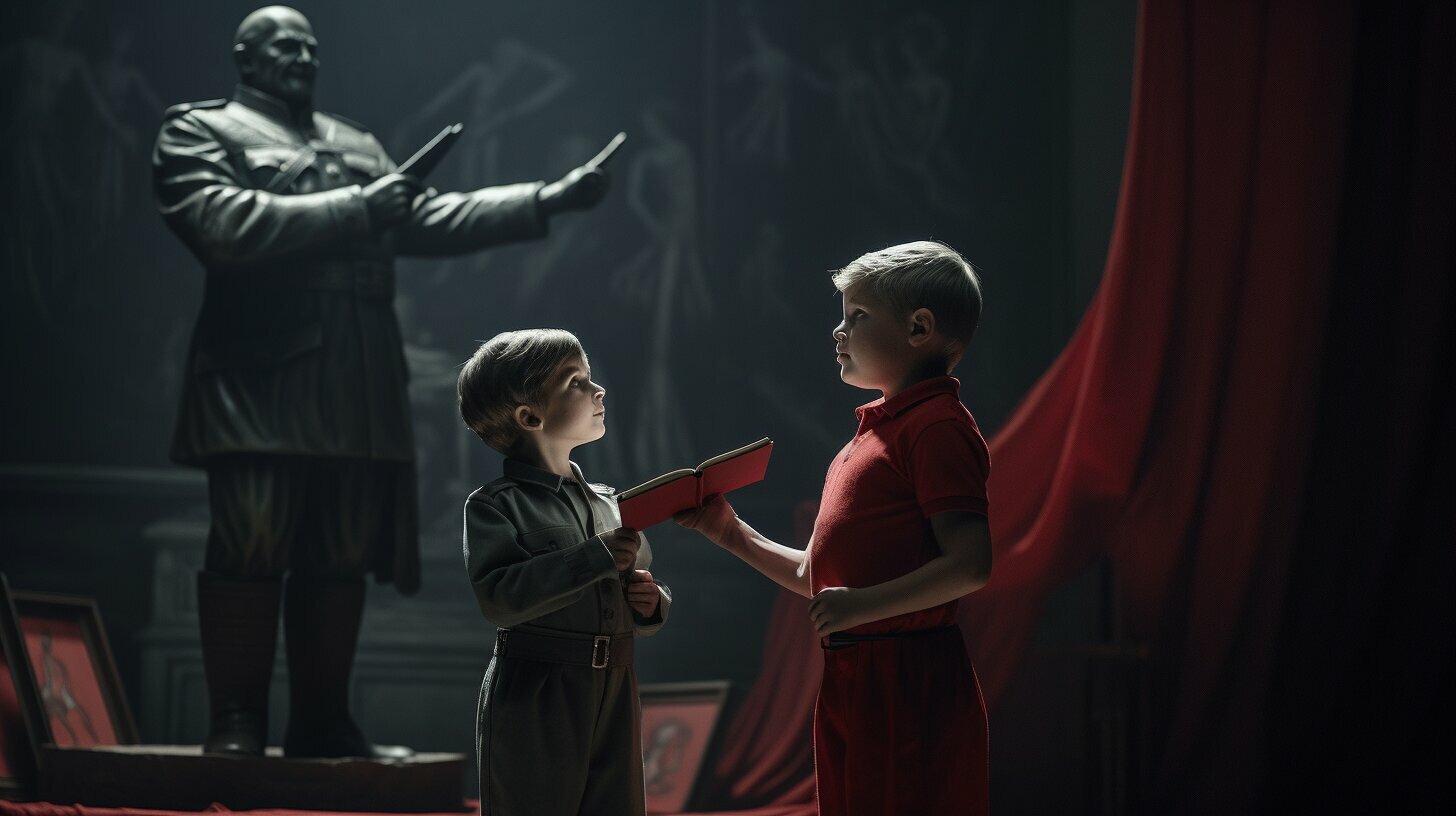As a parent, you want to raise your child to be kind, compassionate, and peaceful. However, explaining the complex concept of peace to a child can be challenging. It’s important to teach children about peace from a young age, to foster a peaceful environment and promote positive behavior. In this section, we’ll provide you with simple steps and strategies to explain peace to your child, helping them to develop the values of empathy, kindness, and understanding.
Key Takeaways:
- Teaching children about peace from a young age is crucial for promoting positive behavior.
- Explaining the concept of peace to a child can be challenging, but there are simple steps and strategies to help.
- Fostering a peaceful environment can help children develop values such as empathy, kindness, and understanding.
What is Peace and Why is it Important?
Peace is a state of harmony characterized by the absence of conflict and violence. It is an essential aspect of human existence as it creates a safe and secure environment for individuals to thrive in. Teaching children about peace is crucial in helping them develop a sense of empathy, kindness, and understanding towards others.
Exposing children to peaceful concepts from a young age can help shape their worldview positively and enable them to become responsible and compassionate individuals. Explaining the concept of peace to children can be challenging, but it is essential in helping them understand the importance of respecting others and resolving conflicts peacefully.
When teaching kids about peace, it is important to emphasize the role that each individual plays in creating a peaceful environment. By promoting kindness, empathy, and understanding, children can learn to appreciate and respect the differences in others, leading to a more peaceful world for all.

Teaching children about peace also enables them to cope with difficult situations and emotions, such as anger, fear, and sadness. By promoting peaceful communication and conflict resolution skills, children can learn to express their feelings and resolve disputes without resorting to violence or aggression.
Overall, explaining peace concepts to children and teaching them about the importance of peace is essential in helping them develop into responsible, kind, and empathetic individuals who contribute positively to society.
Introduce Peaceful Language and Communication
Teaching children peaceful language and communication is essential to help them express their feelings and needs without resorting to aggression or violence. As a parent, you can set an example by using kind and respectful words while communicating with your child. One effective way to encourage peaceful communication is to teach your child the “I-message” technique.
The “I-message” technique involves focusing on your own feelings and needs rather than criticizing or blaming the other person. For instance, instead of saying “You always make a mess in the living room,” you can say “I feel frustrated when I see toys on the floor because it makes it hard for me to relax.”
Another helpful strategy is to encourage your child to express their emotions in a safe and non-judgmental environment. You can create a “feelings corner” in your home where your child can go and express their emotions through art, writing, or talking. This will help your child develop emotional intelligence and learn how to communicate their feelings in a healthy way.
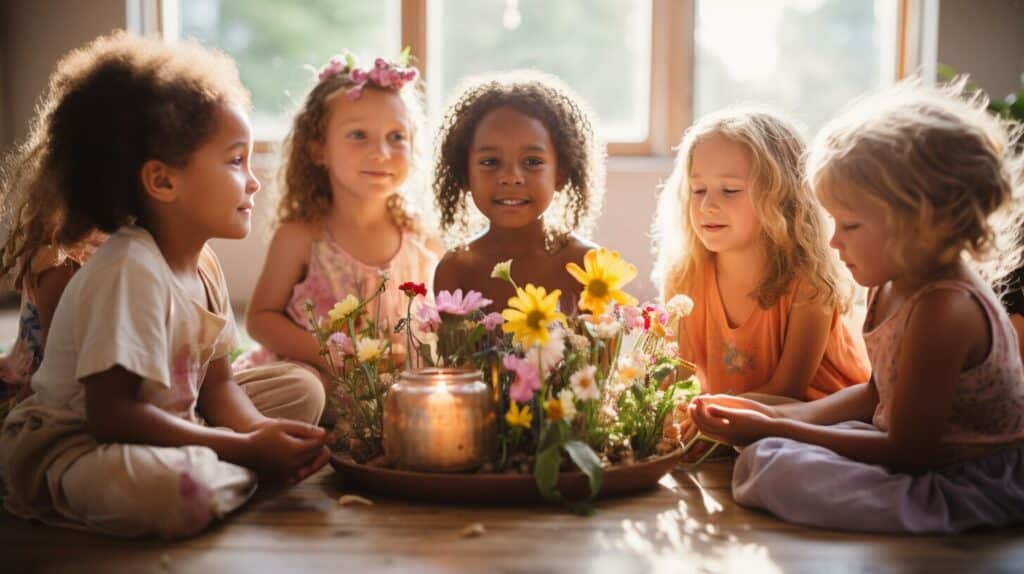
You can also teach your child active listening skills to help them understand and empathize with others. Encourage your child to pay attention to the speaker, maintain eye contact, and ask questions to clarify their understanding. This will help your child develop empathy and learn to communicate with kindness and respect.
Teach Empathy and Kindness
Empathy and kindness are essential components of a peaceful society. As a parent, you can foster these qualities in your child by setting an example and providing opportunities for your child to practice them.
Encourage your child to imagine how others feel and express their emotions without judgement. Use everyday situations as teaching moments. For example, if your child sees a friend fall and get hurt, talk to them about how their friend might be feeling and suggest ways to help.
Teach your child to treat others with kindness and respect, even when they disagree. Show them how to listen to others’ opinions and respond thoughtfully without resorting to name-calling or physical aggression.
It’s also important to model empathy and kindness yourself. Your child will learn from your actions as well as your words.
Remember, teaching empathy and kindness is an ongoing process that requires patience and consistency. Keep these values at the forefront of your parenting approach.
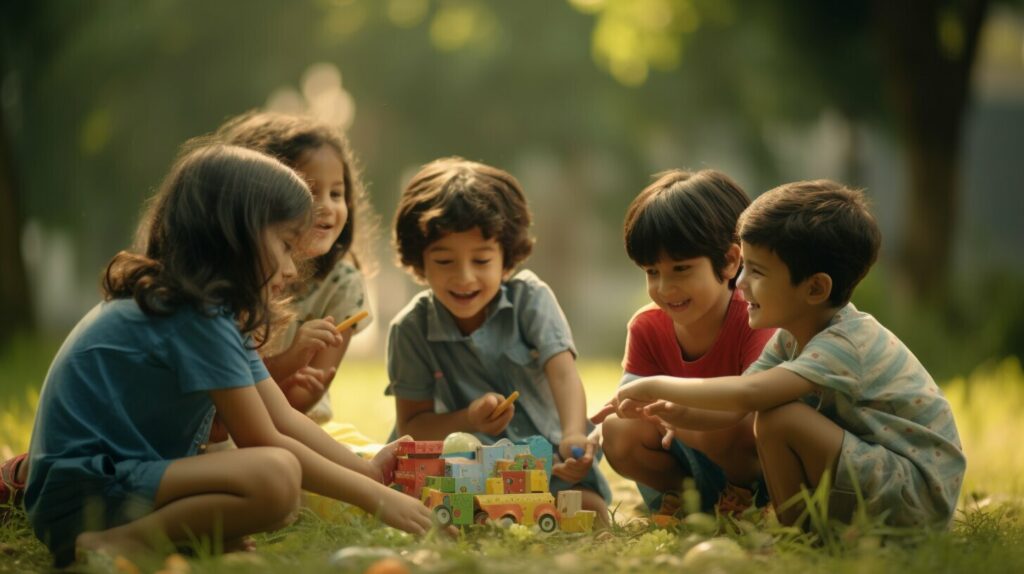
“Empathy is seeing with the eyes of another, listening with the ears of another, and feeling with the heart of another.” – Alfred Adler
Explore Peaceful Activities and Art
Introducing children to peaceful activities and art forms can help them develop healthy coping mechanisms and express their emotions creatively. Here are some ideas to get you started:
1. Mindful Coloring
Coloring books featuring calming images and patterns can help children relax and focus on the present moment. Encourage your child to choose colors that represent peace and tranquility. As they color, ask them to reflect on how they feel and what they are creating.
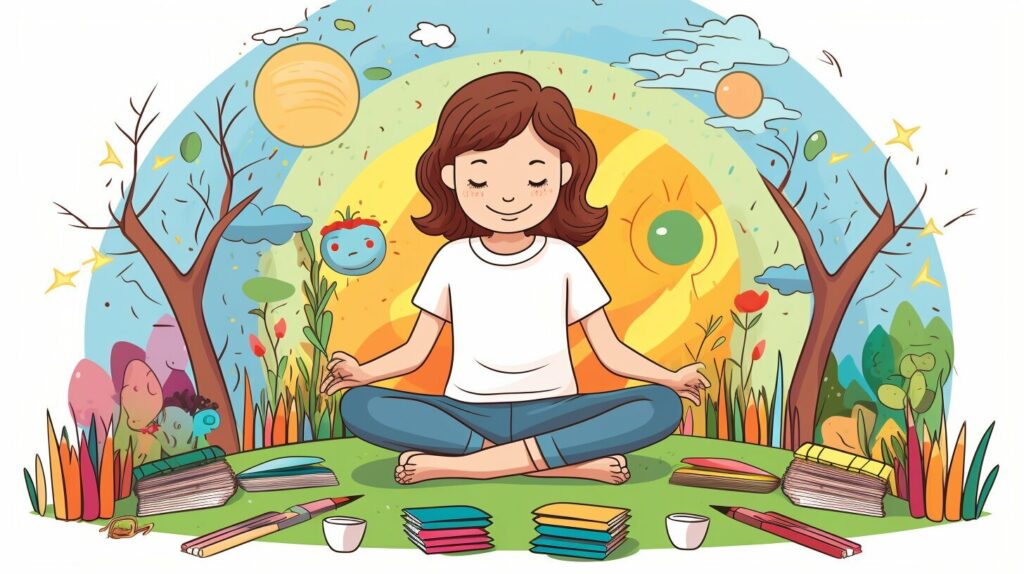
2. Yoga and Meditation
Yoga and meditation are great tools for teaching children to calm their minds and bodies. Consider practicing together as a family or enrolling your child in a youth yoga class. Encourage them to focus on their breath and visualize peaceful environments.
3. Peaceful Crafts
Engage your child in peaceful crafts, such as making a gratitude jar or a peace collage. Encourage them to use materials that represent peace, such as white paper, doves, and peace signs. As they create, ask them to reflect on what peace means to them and how they can spread it in their own lives.

Exploring peaceful activities and art can be a fun and rewarding way to teach children about peace. Remember to encourage your child to express themselves creatively and reflect on the peace they are creating within themselves and the world around them.
Teach Conflict Resolution Skills
As much as we try to create a peaceful environment for our children, conflicts are inevitable. That’s why it is crucial to teach children effective conflict resolution skills to resolve disputes in a peaceful manner. Here are some age-appropriate strategies you can use:
| Age Group | Conflict Resolution Strategies |
|---|---|
| Preschoolers (3-5 years) |
|
| Elementary Schoolers (6-11 years) |
|
| Teens (12-18 years) |
|
By teaching your children these skills, they will be better equipped to handle conflicts in a healthy, productive way. Remember to model these behaviors as well, as children learn by example.
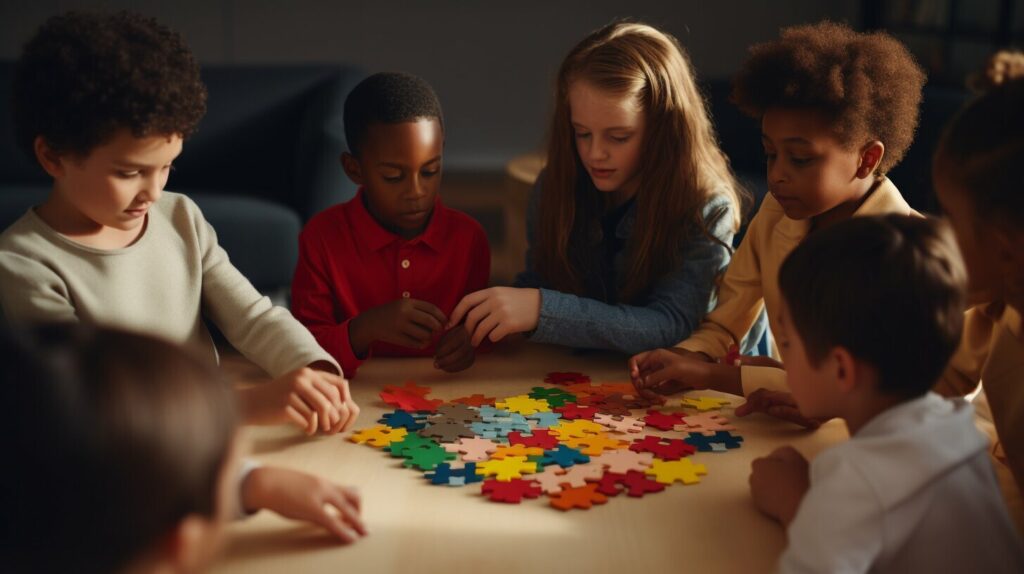
Introduce Positive Role Models
Children often learn by example, and it’s essential to introduce them to positive role models who embody peace and kindness. This way, they can learn from and emulate these role models. As a parent, you can help your child identify positive role models, such as a community leader or even a family member who exemplifies peace and compassion.
Encourage your child to ask questions and learn about the virtues that make these role models stand out. You can also read books or watch movies together that feature characters who demonstrate peaceful behaviors and attitudes.

Image source: seowriting.ai
Recognize and Celebrate Acts of Peace
Recognizing and celebrating acts of peace is an important step in reinforcing peaceful behavior in children. When children understand that their peaceful actions are noticed and appreciated, they are more likely to continue exhibiting those behaviors. Here are some ideas for how to recognize and celebrate acts of peace:
| Strategy | Description |
|---|---|
| Peaceful Praise | When you notice your child exhibiting peaceful behavior, be sure to praise them for it. Use phrases such as “I really appreciate the way you handled that,” or “It was great to see you choose kindness in that situation.” |
| Celebrate with a Special Activity | When your child exhibits peaceful behavior, celebrate it with a special activity. This could be something like going out for ice cream or spending an extra hour at the park. |
| Peaceful Art Project | Encourage your child to create an art project that reflects peace and kindness. Help them hang their project in a prominent place to serve as a reminder of the importance of peaceful behavior. |
Remember to also model peaceful behavior yourself. When your child sees you exhibiting peaceful actions and language, they are more likely to follow suit. And don’t forget to celebrate your own peaceful actions as well!
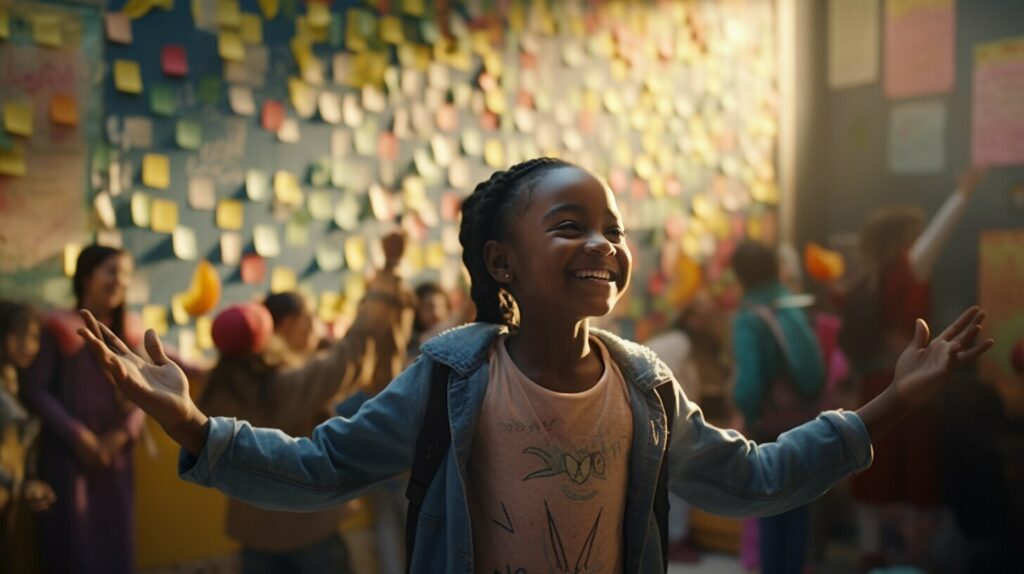
Addressing Difficult Topics
Teaching kids about peace can be challenging, especially when discussing difficult topics such as war, violence, and injustice. It’s important to approach these conversations with sensitivity, honesty, and age-appropriate explanations.
First, it’s essential to create a safe and supportive environment for your child to express their thoughts and feelings. Encourage them to ask questions, share their concerns, and express their emotions.
When discussing war, explain that it involves two or more groups of people fighting and hurting each other. You can emphasize that war is never the ideal solution, but sometimes people feel that it’s necessary. Reassure your child that peace is always the goal, and that people continue to work towards it every day.
When talking about violence, it’s important to emphasize that it’s never okay to hurt others physically or emotionally. Explain that violence only creates more problems and pain, and that peaceful communication and conflict resolution are always better options.
When discussing injustice, you can explain that it means treating people unfairly based on things such as their skin color, religion, or gender. Emphasize that everyone deserves to be treated with respect and kindness, and that it is important to speak out against discrimination and unfairness.
Remember to use age-appropriate language and examples, and to end these conversations on a positive note, emphasizing the importance of peaceful communication and action. Encourage your child to think about ways in which they can promote peace and kindness in their own lives and communities.

“It’s important to approach difficult topics related to peace with sensitivity, honesty, and age-appropriate explanations.”
Section 10: Conclusion
Congratulations! You have now learned some simple and effective strategies for teaching peace to your child. By incorporating these strategies into your daily life, you can create a peaceful environment for your little one to grow and thrive.
Remember, teaching peace is a continuous process that requires patience, dedication, and consistency. It may not always be easy, but the rewards are invaluable. By equipping your child with the tools to navigate conflicts and build positive relationships, you are setting them up for a lifetime of success and happiness.
So keep practicing peaceful communication, promoting empathy and kindness, introducing positive role models, and celebrating acts of peace. And don’t forget to address difficult topics with compassion and understanding. You’ve got this!
FAQ
Q: How can I explain peace to my child?
A: Explaining peace to a child can be done through simple steps. Start by defining peace as a state of harmony and calmness, where everyone treats each other with kindness and respect.
Q: Why is teaching peace to children important?
A: Teaching children about peace is crucial because it helps them understand the value of empathy, kindness, and positive communication. It cultivates a sense of understanding and harmony in their relationships with others.
Q: How can I introduce peaceful language and communication to my child?
A: You can introduce peaceful language and communication by encouraging your child to express their feelings and thoughts calmly and respectfully. Provide them with examples of peaceful ways to resolve conflicts and teach them active listening and empathy.
Q: How can I teach empathy and kindness to my child?
A: Teaching empathy and kindness can be done through leading by example and encouraging your child to understand and consider others’ perspectives. Engage in acts of kindness together and discuss the importance of treating others with compassion and respect.
Q: What are some peaceful activities and art forms I can engage my child in?
A: You can engage your child in peaceful activities such as yoga, meditation, nature walks, and creative art projects. These activities promote relaxation, self-expression, and mindfulness.
Q: How can I teach my child conflict resolution skills?
A: Teaching conflict resolution skills starts with teaching your child to communicate effectively and listen actively. Encourage them to find peaceful solutions and help them navigate through conflicts by brainstorming ideas together.
Q: How can I introduce positive role models to my child?
A: Introduce your child to positive role models through books, movies, and real-life examples. Talk about the qualities that make these role models peaceful, kind, and compassionate, and encourage your child to learn from their behavior.
Q: How can I recognize and celebrate acts of peace from my child?
A: Recognize and celebrate acts of peace by acknowledging your child’s peaceful behaviors and actions. Offer praise and rewards, create a peaceful behavior chart, or share their achievements with family and friends.
Q: How can I address difficult topics related to peace with my child?
A: When addressing difficult topics like war, violence, and injustice, it’s important to provide age-appropriate explanations and answer your child’s questions honestly. Use simple language and focus on promoting empathy, understanding, and the importance of peaceful solutions.

